Of the 15 teams in the Western Conference, only two are clearly focused more on the 2025 draft lottery than the 2024/25 standings. The 10-31 Jazz and 14-28 Trail Blazers don’t have realistic postseason aspirations this season, with management prioritizing the development of young players and the possibility of landing another high draft pick.
Those two teams are sandwiching the 12-32 Pelicans, who definitely didn’t expect their season to play out like this. Plagued by injuries since top offseason acquisition Dejounte Murray broke his hand on opening night, New Orleans has won its past four games but likely dug too deep a hole in the first half to seriously vie for a play-in spot this season, even if the roster gets (and stays) fully healthy.
Still, that leaves 12 teams in the hunt for eight playoff spots in the Western Conference.
We can safely pencil in the Thunder for one of those spots — and it will almost certainly be the top one. At 35-7, Mark Daigneault‘s squad has a seven-game cushion on the next-best team in the conference.
The Rockets (28-14), Grizzlies (28-15) and Nuggets (26-16) round out the current top four in the West and appear well positioned to claim playoff berths. That’s not necessarily a lock, given how competitive the conference is — a single injury could be all it takes for one of those teams to fall back to the pack. But they’re in strong positions.
After the top four, things gets interesting. Here are the current Western Conference standings from five through 12:
- Los Angeles Clippers (24-18)
- Los Angeles Lakers (22-18)
- Dallas Mavericks (23-20)
- Sacramento Kings (22-20)
- Minnesota Timberwolves (22-21)
- Phoenix Suns (21-21)
- Golden State Warriors (21-21)
- San Antonio Spurs (19-22)
These eight teams are separated by a total of 4.5 games. The gap from No. 6 to 11 is just two games. A five-game winning streak or losing streak for any of these clubs could significantly change the perception of how their season is going.
To that point, as recently as January 4, the Kings were 12th in the conference at 16-19, while the Spurs were in eighth place at 18-16. A Sacramento hot streak and a San Antonio cold spell have resulted in those two clubs swapping places in the standings just seven games later.
The Spurs are probably a little ahead of schedule in their rebuild and didn’t necessarily expect to make the postseason this year, so if they continue to slump, it wouldn’t be the worst thing in the world for them. But the rest of the clubs listed above had serious playoff aspirations this season. The Clippers, Lakers, Mavericks, Timberwolves, Suns, and Warriors are all spending into the tax on their rosters, and the Kings aren’t far off.
Barring a major collapse from one of the top four seeds, one of these clubs (or two, if San Antonio sticks around) will finish outside the top 10, missing out not just on the playoffs but on the play-in altogether. Two more will be eliminated in the play-in tournament and will fail to clinch one of the eight playoff spots in the West.
What happens at the trade deadline could go a long way toward determining how this race plays out down the stretch, but we want to know what you’re thinking at the halfway point of the season.
Which teams do you expect to finish outside of the top 10 in the West? Which teams will be eliminated in the play-in? Which clubs besides the Thunder are the most serious contenders to represent the conference in this year’s NBA Finals?
Head to the comment section below to weigh in with your thoughts!
 A player still forfeits a portion of his salary when he’s suspended by his team (subject to appeal), but his team doesn’t generate any cap or tax savings.
A player still forfeits a portion of his salary when he’s suspended by his team (subject to appeal), but his team doesn’t generate any cap or tax savings.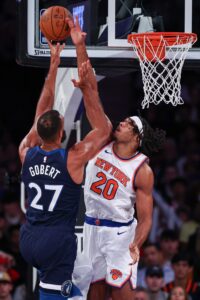 What does that mean in practical terms? Let’s use Knicks center
What does that mean in practical terms? Let’s use Knicks center 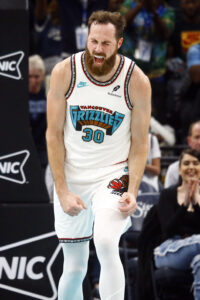
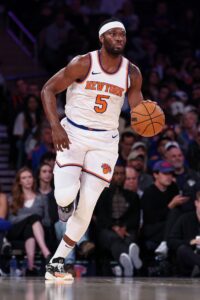
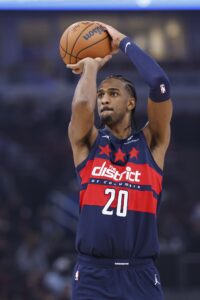 It’s no surprise that a No. 2 overall pick like Sarr is in contention for that honor, but his stat line through 34 professional contests isn’t exactly what you’d expect from the Rookie of the Year frontrunner: 11.7 points, 6.6 rebounds, 2.3 assists, and 1.6 blocks in 27.1 minutes per night, with a shooting line of .406/.325/.641.
It’s no surprise that a No. 2 overall pick like Sarr is in contention for that honor, but his stat line through 34 professional contests isn’t exactly what you’d expect from the Rookie of the Year frontrunner: 11.7 points, 6.6 rebounds, 2.3 assists, and 1.6 blocks in 27.1 minutes per night, with a shooting line of .406/.325/.641.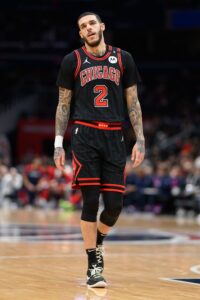 Although his numbers, including 5.8 points per game on .359/.318/.750, don’t look especially strong, Ball is once again making the sorts of winning plays that don’t show up in the box score. Chicago has a +6.9 net rating when he’s on the court, compared to a -5.0 mark when he’s not.
Although his numbers, including 5.8 points per game on .359/.318/.750, don’t look especially strong, Ball is once again making the sorts of winning plays that don’t show up in the box score. Chicago has a +6.9 net rating when he’s on the court, compared to a -5.0 mark when he’s not.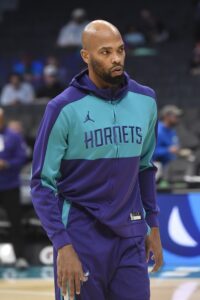
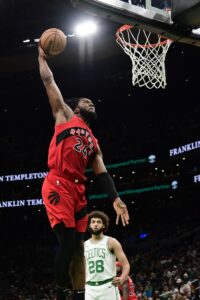 All three of these players were on minimum-salary contracts. Carlson is a rookie who was signed well after the regular season began, which is why his cap hit is so modest compared to the others.
All three of these players were on minimum-salary contracts. Carlson is a rookie who was signed well after the regular season began, which is why his cap hit is so modest compared to the others.